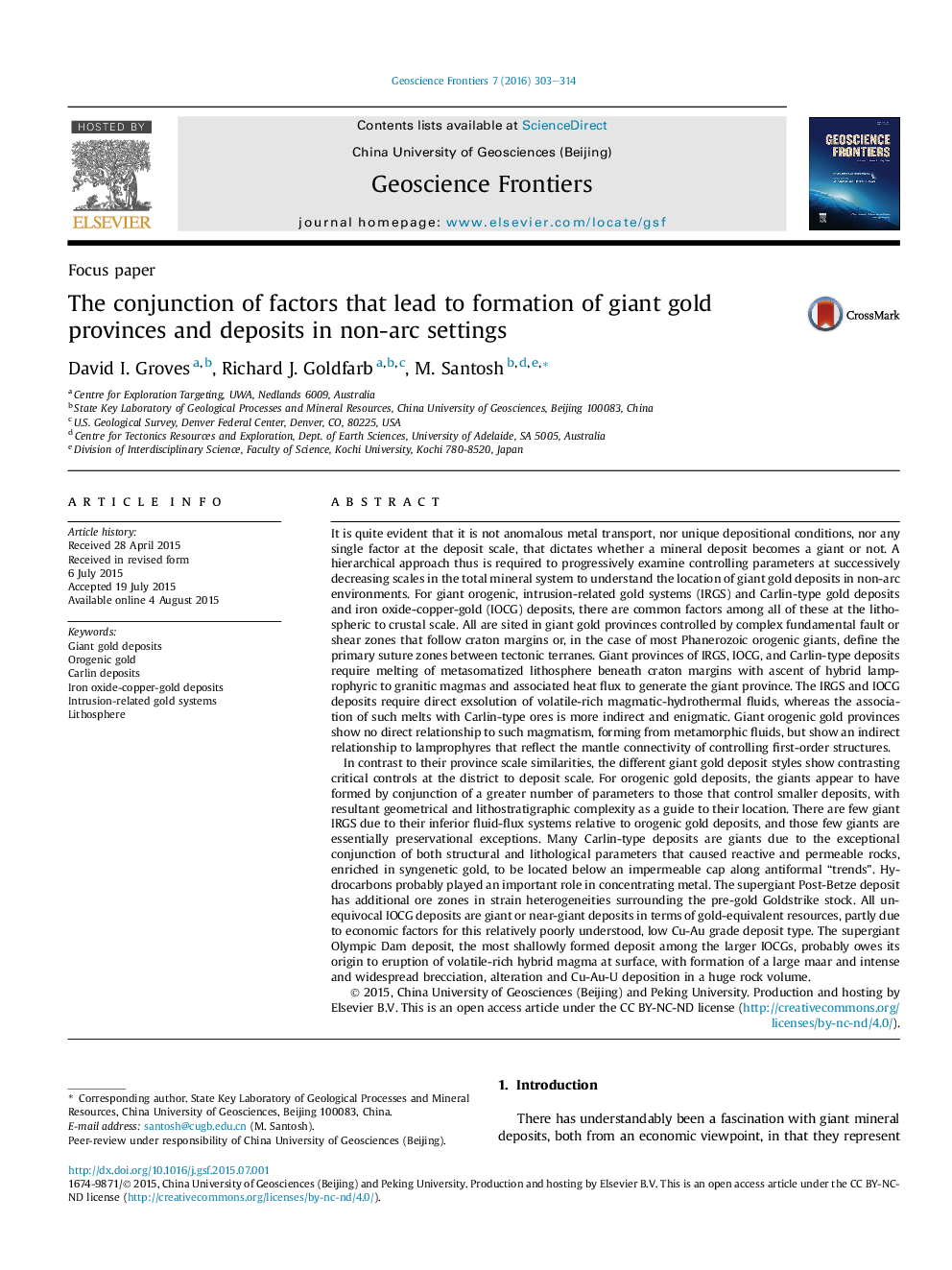| کد مقاله | کد نشریه | سال انتشار | مقاله انگلیسی | نسخه تمام متن |
|---|---|---|---|---|
| 4681502 | 1348854 | 2016 | 12 صفحه PDF | دانلود رایگان |
• Lithospheric to crust scale common factors govern the formation of giant ore deposits.
• Contrasting and diverse critical controls at the district to deposit scale.
• Hierarchical approach required to understand giant gold deposits in non-arc settings.
It is quite evident that it is not anomalous metal transport, nor unique depositional conditions, nor any single factor at the deposit scale, that dictates whether a mineral deposit becomes a giant or not. A hierarchical approach thus is required to progressively examine controlling parameters at successively decreasing scales in the total mineral system to understand the location of giant gold deposits in non-arc environments. For giant orogenic, intrusion-related gold systems (IRGS) and Carlin-type gold deposits and iron oxide-copper-gold (IOCG) deposits, there are common factors among all of these at the lithospheric to crustal scale. All are sited in giant gold provinces controlled by complex fundamental fault or shear zones that follow craton margins or, in the case of most Phanerozoic orogenic giants, define the primary suture zones between tectonic terranes. Giant provinces of IRGS, IOCG, and Carlin-type deposits require melting of metasomatized lithosphere beneath craton margins with ascent of hybrid lamprophyric to granitic magmas and associated heat flux to generate the giant province. The IRGS and IOCG deposits require direct exsolution of volatile-rich magmatic-hydrothermal fluids, whereas the association of such melts with Carlin-type ores is more indirect and enigmatic. Giant orogenic gold provinces show no direct relationship to such magmatism, forming from metamorphic fluids, but show an indirect relationship to lamprophyres that reflect the mantle connectivity of controlling first-order structures.In contrast to their province scale similarities, the different giant gold deposit styles show contrasting critical controls at the district to deposit scale. For orogenic gold deposits, the giants appear to have formed by conjunction of a greater number of parameters to those that control smaller deposits, with resultant geometrical and lithostratigraphic complexity as a guide to their location. There are few giant IRGS due to their inferior fluid-flux systems relative to orogenic gold deposits, and those few giants are essentially preservational exceptions. Many Carlin-type deposits are giants due to the exceptional conjunction of both structural and lithological parameters that caused reactive and permeable rocks, enriched in syngenetic gold, to be located below an impermeable cap along antiformal “trends”. Hydrocarbons probably played an important role in concentrating metal. The supergiant Post-Betze deposit has additional ore zones in strain heterogeneities surrounding the pre-gold Goldstrike stock. All unequivocal IOCG deposits are giant or near-giant deposits in terms of gold-equivalent resources, partly due to economic factors for this relatively poorly understood, low Cu-Au grade deposit type. The supergiant Olympic Dam deposit, the most shallowly formed deposit among the larger IOCGs, probably owes its origin to eruption of volatile-rich hybrid magma at surface, with formation of a large maar and intense and widespread brecciation, alteration and Cu-Au-U deposition in a huge rock volume.
Figure optionsDownload as PowerPoint slide
Journal: Geoscience Frontiers - Volume 7, Issue 3, May 2016, Pages 303–314
